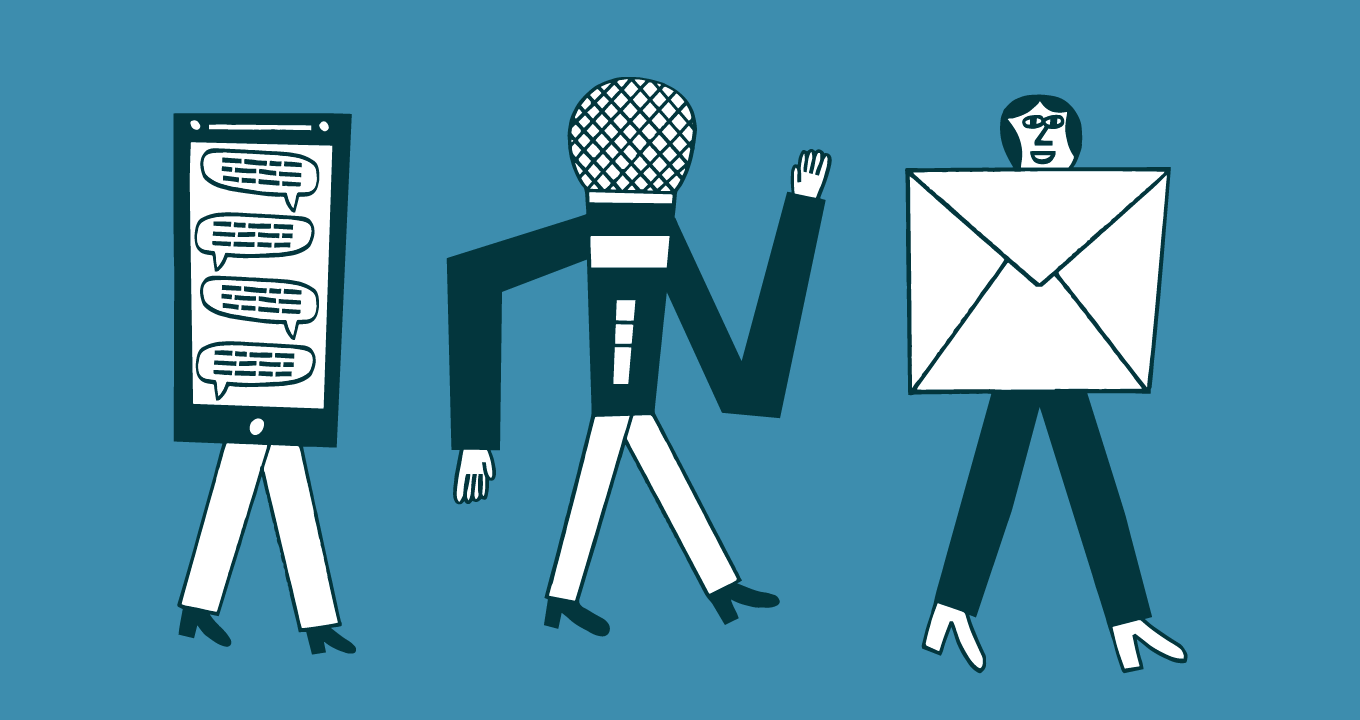Article • 6 min read
How an omnichannel customer experience contact center works
Find out how an omnichannel customer experience can streamline your contact center operations and make life easier for both customers and agents.
출처 Sarah Olson, Senior Associate, Content Marketing, @seolson5
최종 업데이트: October 14, 2020
Digital communication has never been easier, nor more imperative. We can connect with remote coworkers over Zoom, chat with friends on Facebook Messenger, receive text updates about a food delivery, and ask Alexa to order more toilet paper.
Meanwhile, many contact centers are still relying solely on phone and email for customer service. While those channels are still important, there’s a lot more that you can be doing to help your customers in this digital, distributed world.
With an omnichannel customer experience, you can be helpful everywhere. Let’s get started.
What is an omnichannel contact center?
An omnichannel contact center is a contact center that can receive customer requests from multiple channels, such as email, phone, chat, social media, etc.
Customers can submit requests via their preferred channel
Agents can view customer requests using a single tool
Software pulls in customer data, so agents have more context
Customers benefit from faster, more personalized service
The goal of an omnichannel experience is to simplify customer engagement and improve the customer experience by making it easy for agents to provide a consistent, seamless experience across all service channels.
Benefits of an omnichannel customer experience
In reality, customers don’t think about the interaction in terms of channels, they just want to be helped. With an omnichannel strategy, you can focus less on the channels you offer and more on the help you provide. The result is a more seamless experience for both the customer and agent.
30% of CX leaders said hard-to-use systems were the top factor hindering the agent experience.
We can’t forget the importance of the agent experience. A recent study found that a good agent experience drives customer satisfaction and loyalty, with nearly a third of CX executives saying that hard-to-use systems were the biggest challenge they faced when trying to improve the agent experience, higher than any other category.
Omnichannel can make life easier for your agents by consolidating data in a single tool, streamlining customer interactions, and giving them greater visibility from start to finish.
Here are a few benefits of an omnichannel customer experience solution:
Single view
- Manage tickets from a single customer view
Less toggling and more helping
Improved CX
Respond sooner and resolve faster
No more leaving customers on read
Easier reporting
Monitor KPIs across all channels
Reduce manual reporting
How an omnichannel contact center works
While many organizations offer multichannel service, true omnichannel means that you can maintain visibility across the customer journey, and you can switch between channels without losing customer information and context.
Picture this: A customer contacts you via live chat with a question about an erroneous charge.
With an omnichannel, the interaction could go something like this:
Agent responds
A customer support agent responds to the live chat message.Conversation is transferred from live chat to email
The agent switches from live chat to email to ensure the security of the customer’s billing information. It’s easy to pick up where they left off.Agent gets confirmation from the billing department
Before refunding the customer, the agent requests confirmation from the billing department using Slack for Zendesk Support. They give the green light to begin the refund.Issue resolved
The agent begins the refund and closes the ticket. Shortly afterward, the customer receives a customer satisfaction (CSAT) survey to rate their experience.Customer feedback received
They give a high satisfaction rating for fast customer service and a seamless experience.
Omnichannel sounds great in theory, but once you have an omnichannel solution in place, how do you make sure you’re actually delivering on the promise of a great customer experience?
Read on to find out how to make sure your experience lives up to customer expectations.
Omnichannel customer experience management
Customer service software can help you enrich the customer experience so you can meet customer needs and increase customer satisfaction.
Here are a few tips to manage your omnichannel customer experience:
- Build automated workflows for a more consistent experience
Using automations for repetitive tasks saves you time, increases efficiency, and ensures consistency as you scale. - Add apps and integrations to facilitate collaboration
You likely have tools you’re already using such as Slack, JIRA, or Zoom. Adding the right app integrations can help your team work together to solve customer problems. - Unlock customer data for more personalized service
By tapping into customer data (such as purchase history), your agents can provide more specific and contextually relevant responses. - Ask for customer feedback so you can improve you CX
Take advantage of CSAT surveys and apps like Qualtrics for Zendesk Support to dig deeper, so you can continually optimize your customer experience.

5 signs it’s time to consider an omnichannel solution
If any of these scenarios sound familiar, it may be time to consider a more robust solution for your customer service.
Your customer experience is inconsistent across channels
A customer who reaches out on social media should get the same great service as a customer who sends you an email. Being accessible builds trust and increases customer loyalty. Omnichannel allows you to provide a consistent, seamless experience on any channel, not just the channels that get the most volume.Agents are switching between solutions
Managing multiple systems is one of the biggest pain points for customer support teams. A solution that’s flexible enough to integrate with the tools and apps you already use means less hassle and better performance. By consolidating information into a single customer view, first reply times go down and issues can be resolved faster.You’re in the dark when it comes to previous interactions
Lack of visibility into past customer interactions and activity can lead to a frustrating customer experience where customers have to repeat themselves endlessly. Instead, by centralizing user information like ticket history and device data in an omnichannel solution, you retain the context of each conversation, reducing customer effort and facilitating more personalized service.Reporting across channels is difficult
When you have one metrics system for chat, another for social media, and another for email, reporting gets complicated. Compiling the data takes time, and it’s difficult to achieve parity across channels. An omnichannel solution provides a single source of truth where you can see metrics in real-time, allowing you to make changes and adjust staffing on the fly.There’s no time to set up a new channel
If piloting a new channel feels overwhelming, you might be going about it the wrong way. Omnichannel provides a single solution with rapid time to value. You can easily add or remove channels. See what works best for your customers and your support team, and shift channel offerings according to customer preferences and industry trends.
Be ready for anything
Adopting an omnichannel solution gives you the flexibility to meet changing customer expectations. We’ve seen shifts in customer behavior since the COVID-19 pandemic began, such as an increased reliance on chat and messaging channels. But the world will keep changing and so too will customers’ channel preferences. With omnichannel support, you can be ready for anything.
